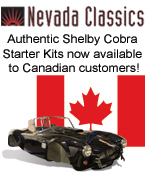 
 Main Menu
Main Menu
|
 Nevada Classics
Nevada Classics
|
 Advertise at CC
Advertise at CC
|
 February 2025
February 2025
|
| S |
M |
T |
W |
T |
F |
S |
| |
|
|
|
|
|
1 |
| 2 |
3 |
4 |
5 |
6 |
7 |
8 |
| 9 |
10 |
11 |
12 |
13 |
14 |
15 |
| 16 |
17 |
18 |
19 |
20 |
21 |
22 |
| 23 |
24 |
25 |
26 |
27 |
28 |
|
|
 CC Advertisers
CC Advertisers
|
|

01-16-2004, 11:39 AM
|
|
CC Member

|
|
|
Join Date: Dec 2001
Location: Louisville,
KY
Cobra Make, Engine: I'm Cobra-less!
Posts: 9,417
|
|

 Not Ranked
Not Ranked
After the braking has ceased, then yes, I would think the pads would quickly follow the rotors in cooling.
|
-
Advertising


01-16-2004, 12:05 PM
|
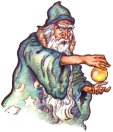 |
Senior Club Cobra Member

|
|
|
Join Date: Jun 1999
Location: Fallbrook, CA USA,
CA
Cobra Make, Engine: Porsche 928 S4
Posts: 739
|
|

 Not Ranked
Not Ranked

Quote:
Originally posted by rdorman
Anyways, so the rotor acts main method of ridding the system of heat? In the most simplistic terms the rotor, by design and relationship to the air flow, cools faster and as the temperatures between the rotor and pad attempt to equalize thermal energy is transfered to the rotor and then disappated? Some where in the ball park?
Rick
|
Rick,
Correct. We always simply treat the rotor as a heat storage device.
You know, rate of input and rate of exchange to atmosphere. (Of course atmosphere is a really tricky bit. As moisture content is quite critical in the calculation. Think about water spray systems in Trans-Am cars.)
The caliper is ignored as a part of the heat exchange system.
The pad is considered from its CF and ablative exchange characteristics.
Blykins,
Correct assumptions. The more rotor mass, the more heat one can store per braking event.
However, heat transfer area of rotors is quite dependent on configuration of the rotor and the air supply system to it.
A solid rotor is of course the simplest unit to calculate. Vented units are very difficult due to the various configurations of the internals. The internal vane area needs to be calculated and of course the rate of transfer from the input surface to the interior, etc. (IE: heat path.)
This now this gets really confusing as the air supply system to the center of the rotor becomes very important as well as the wheel configuration. The vented rotor is typically treated as a headed centrifugal pump in a confined system.
We find it best to just look at rotor mass in the equations and leave the rest to empirical data and adjust the systems from there.
Rick said,
"That seems logical to me. Is it fair to assume that the drop in temperature of the rotor will be closely followed by the pad temperature? This may already be explained in the formulas but I have yet to digest them."
Close enough for government work.
But this is where ablation and material heat transfer rates come into the mix. The pad temps are seldom equal to rotor temp until you reach ambient levels. Remember that rate of exchange is wildly different for pad materials, whereas iron is pretty constant. Plus pads do not contact the rotor once pressure is removed from the system. The O-Rings pull the pads away from the rotor in a properly designed caliper. |

01-16-2004, 12:20 PM
|
 |
Renegade Nuns on Wheels

|
|
|
Join Date: Aug 2001
Location: columbus,
Oh
Cobra Make, Engine: Unique 427 roadster with 351C-4B
Posts: 5,129
|
|

 Not Ranked
Not Ranked
Sounds good. I am definiatly NOT looking to make a truly accurate computer model of brake system thermal dynamics. What I would like to do is give some one an idea of what kind of temperature range to expect for a certain BROAD set of cercumstances. Giving some one temperature rise for a single stop is all well and good but how about estimating temperatures for say a Cobra on Mid-Ohio? If I could come close enough to give a temp range that a pad could be selected as a starting point that would be good enough for me! This of course would also play into the choice of rotors. If the intended use is road courses like Mid-Ohio and the anticipated temperature range was to high then they would need to go back and increase rotor size/mass.
Tall order I know. Just looking to take some of the guess work out of the whole process.
Rick
|

01-16-2004, 03:06 PM
|
 |
Senior Club Cobra Member

|
|
|
Join Date: Jun 1999
Location: Fallbrook, CA USA,
CA
Cobra Make, Engine: Porsche 928 S4
Posts: 739
|
|

 Not Ranked
Not Ranked

Rick,
Back in old days before telemetry and data recorders, we attempted to do exactly what you are speaking of.
It was a dismal failure.
We made assumptions based on course layout, speeds at end of straights, braking distances, etc. We gave it our best inputs and thought and it still did not give good numbers. Compared to empirically based data it was junk.
Once we had telemetry and data logging, we found out that Driver verbal inputs and reports were way off course, consistency of braking was all over the map, and most all of our assumptions were bogus.
We found that you can take the identical car with two different drivers that turned laps within 2/10's of a second of each other at Road Atlanta and the brake temps and pad/rotor wear were dramatically different.
So much so, that one could reduce brake mass for one driver by 30% and still have brakes at the end of a stint. Plus the lap times stayed the same.
It would my best advice for you make the assumption that you will need to stop the car from a given terminal velocity 10 times in a row. With only the acceleration times for cooling.
Then increase the brake mass required by 10%. This will give sizing that will satisfy 99% of the braking requirements for these cars in road course usage.
Plus, this is something that you can put in a spread sheet fairly easily and be confident with the resulting numbers.
(By the way, your spreadsheet is much better than the stuff we were doing in old days. Good work!!!!!)  
Of course, all we had were yellow legal pads and a HP calculator. Nothing like reverse polish notation. 
Last edited by Richard Hudgins; 01-16-2004 at 07:40 PM..
|

01-17-2004, 06:34 AM
|
|
CC Member

|
|
|
Join Date: Nov 2003
Location: Dacula,
GA
Cobra Make, Engine: Porsche 928 S4
Posts: 408
|
|

 Not Ranked
Not Ranked
About brake cooling, would it be a benefit to have increased airflow from inside the wheel to out? I've always wanted to make a set of wheels that had impeller like features to draw air through the wheels and expel it outward. I suspect that the speed of rotation might be too low to have a significant effect.
hmm...
|

01-17-2004, 08:46 AM
|
 |
CC Member

|
|
|
Join Date: May 2000
Location: Leicester,
UK
Cobra Make, Engine: Crendon, windsor 408 stroker, tremec. Also GSX008
Posts: 1,406
|
|

 Not Ranked
Not Ranked
Mike - there is a wheel available for Cobra replicas in the UK just like that, fitted to a range of cars made by Gardner Douglas. Like you, I have to wonder if the rotation speed of road wheels is anything like enough to counter other airflow effects.
Richard - your comment about all-carbon brakes is interesting. As a fan of F1, I have often noted the billowing dust cloud coming from the brakes on those cars under heavy braking. If only 5% of braking energy is retained as heat in the system, it says a lot about overall retardation on those cars, as the rotors can often be seen glowing yellow-hot.
__________________
Wilf
|

01-17-2004, 09:04 AM
|
 |
Renegade Nuns on Wheels

|
|
|
Join Date: Aug 2001
Location: columbus,
Oh
Cobra Make, Engine: Unique 427 roadster with 351C-4B
Posts: 5,129
|
|

 Not Ranked
Not Ranked

Thanks Richard! The spreadsheet was started (where it is now) because I got tired of working every possible permutation on paper. Talk about tedious! By the way, you and I exchanged emails about a year ago as I was working through my braking issues. So thank you, you have been of great help to me. Also Fred Puhn's Brake Handbook (out of press but you can find it on Amazon) has been invaluable.
I will take you advise on the 10 stop recomendation for temperatures. Setting up a whole course would be really cool to do but the variables are endless. Much less as you just pointed out the biggest variable of all, the driver. Wasn't even thinking about that one. This is after all an effort to give a person a good place to start with out wandering around completely in the dark.
After working through all the numbers on paper on my car, then installing the parts as suggested by the numbers, the difference in braking for my was nothing short of astounding. At this point and for what I use the car for I would be done. But, as this as been a live and learn process, I missed a variable. The pads I selected had a VERY high coeficient of friction. I choose these pads because the made economic sense in the parts that would be required and because they made the numbers work the best. What I did not count on was that the pads where so bloody dusty that there is no way I can live with them on the street. So, back to paper I went with a pad that I could live with and was once again able to achieve good balance by throwing away the 10.75" rotors and putting on some 12.19" rotors. Live and learn!
Mike, there have been a number of wheel made like that. I beleive 'turbo' wheel is a common street name for them. Seems to me the results have been varied and often not overly effective. Richard would know much better than I but I think the air flow out of the wheel is more a function of the cars overall aerodynamics. To me, proper ducting would be a much better route.
Thanks all! Look for more updates in the future!
Rick
|

01-17-2004, 12:04 PM
|
|
CC Member

|
|
|
Join Date: Jul 2002
Location: rocky river,
Oh
Cobra Make, Engine: Unique 289FIA / SA 351W / a truly glorious machine
Posts: 3,949
|
|

 Not Ranked
Not Ranked
Rick,
Sorry I didn't give your posting the attention it deserves..
I'm so ashamed... Richard seems to think that you've been slighted and ignored... Certainly you are, but what's Richard's point?
By the way, what the hell were you talking about?
Why the hell would I bother to read your diatribe on how to fix them...
If my brakes are broken I'm just gonna put it on a flatbed and bring it down for you to fix anyway...I'm not allowed to play with tools .... A sixpack and a flatbed and I'm back in business. 
Keep up the good work.... 
Last edited by casaleenie; 01-17-2004 at 01:48 PM..
|

01-17-2004, 12:42 PM
|
 |
Renegade Nuns on Wheels

|
|
|
Join Date: Aug 2001
Location: columbus,
Oh
Cobra Make, Engine: Unique 427 roadster with 351C-4B
Posts: 5,129
|
|

 Not Ranked
Not Ranked
Al, put the tools down and back away from the car!!!!!!! 
Later, we are going to ponder the significance of panchromatic resonance and other highly ambient domains. Care to add to the discusion? 
Rick |

01-17-2004, 01:27 PM
|
 |
Senior Club Cobra Member

|
|
|
Join Date: Jun 1999
Location: Fallbrook, CA USA,
CA
Cobra Make, Engine: Porsche 928 S4
Posts: 739
|
|

 Not Ranked
Not Ranked
Sorry Rick,
My knowledge of Frank Zappa or Evelyn the dog is not up to the standards required to add to a pondering of any significance.
I must leave it up to those that are well informed.
But, In the spirit of acquiring and utilizing knowledge, I will follow the thread with utmost diligence.
|

01-17-2004, 01:29 PM
|
 |
CC Member

|
|
|
Join Date: Sep 2002
Location: Hickory,
NC
Cobra Make, Engine: ERA 427SC w/427so, ERA GT #2002
Posts: 1,106
|
|

 Not Ranked
Not Ranked
For handy user information, the best book ever written on brakes for the DIY guy is HPBooks' Brake Handbook by Fred Puhn. Problem is, the book may be out of print. Although it doesn't have the latest products, it provides excellent basic user information that's relatively easy to understand . . . and it still applies.
__________________
Tom
"If you can make black marks on a straight from the time you turn out of a corner until the braking point of the next turn, then you have enough HORSEPOWER." Mark Donohue
|

01-17-2004, 01:31 PM
|
 |
Renegade Nuns on Wheels

|
|
|
Join Date: Aug 2001
Location: columbus,
Oh
Cobra Make, Engine: Unique 427 roadster with 351C-4B
Posts: 5,129
|
|

 Not Ranked
Not Ranked
Quote:
Originally posted by Richard Hudgins
Sorry Rick,
My knowledge of Frank Zappa or Evelyn the dog is not up to the standards required to add to a pondering of any significance.
I must leave it up to those that are well informed.
But, In the spirit of acquiring and utilizing knowledge, I will follow the thread with utmost diligence.
|
ARF she said.......

Rick |

01-17-2004, 01:33 PM
|
 |
Renegade Nuns on Wheels

|
|
|
Join Date: Aug 2001
Location: columbus,
Oh
Cobra Make, Engine: Unique 427 roadster with 351C-4B
Posts: 5,129
|
|

 Not Ranked
Not Ranked
Quote:
Originally posted by speed220mph
For handy user information, the best book ever written on brakes for the DIY guy is HPBooks' Brake Handbook by Fred Puhn. Problem is, the book may be out of print. Although it doesn't have the latest products, it provides excellent basic user information that's relatively easy to understand . . . and it still applies.
|
Got it. Mention it in the other thread. GREAT book and have read it over and over. Most of the math in the spread sheet is straight out of Freds book. I found my copy on Amazon.
Rick |

01-17-2004, 01:36 PM
|
 |
CC Member

|
|
|
Join Date: Sep 2002
Location: Hickory,
NC
Cobra Make, Engine: ERA 427SC w/427so, ERA GT #2002
Posts: 1,106
|
|

 Not Ranked
Not Ranked
Hi Rick: If it's carbon/carbon you like, check out this web site:
http://www.a-t-s-usa.com/ats-product...n-brakes.shtml
__________________
Tom
"If you can make black marks on a straight from the time you turn out of a corner until the braking point of the next turn, then you have enough HORSEPOWER." Mark Donohue
|

01-17-2004, 02:11 PM
|
 |
Renegade Nuns on Wheels

|
|
|
Join Date: Aug 2001
Location: columbus,
Oh
Cobra Make, Engine: Unique 427 roadster with 351C-4B
Posts: 5,129
|
|

 Not Ranked
Not Ranked
OUCH!!!!!! That stuff is expensive!
Rick
|

01-17-2004, 02:15 PM
|
 |
CC Member

|
|
|
Join Date: Sep 2002
Location: Hickory,
NC
Cobra Make, Engine: ERA 427SC w/427so, ERA GT #2002
Posts: 1,106
|
|

 Not Ranked
Not Ranked
Sure is expensive. To give you an example, Mac Tilton used to rent carbon/carbon clutches to Cart teams. Wear was neglible after a season of use!
__________________
Tom
"If you can make black marks on a straight from the time you turn out of a corner until the braking point of the next turn, then you have enough HORSEPOWER." Mark Donohue
|

01-17-2004, 02:19 PM
|
 |
Renegade Nuns on Wheels

|
|
|
Join Date: Aug 2001
Location: columbus,
Oh
Cobra Make, Engine: Unique 427 roadster with 351C-4B
Posts: 5,129
|
|

 Not Ranked
Not Ranked
Mac Tilton rent something!?!?!? There is one of the industry greats, Mac Tilton.
Rick
|

01-17-2004, 05:15 PM
|
 |
CC Member

|
|
|
Join Date: May 2000
Location: Leicester,
UK
Cobra Make, Engine: Crendon, windsor 408 stroker, tremec. Also GSX008
Posts: 1,406
|
|

 Not Ranked
Not Ranked
Tom - interesting link to the ATS products. Those brake rotors look thin - the F1 ones I saw last year were about 1 1/2" to 2" thick. Spoke at some length with a Williams F1 mechanic about them - they last just one race (just).
__________________
Wilf
|

01-17-2004, 05:48 PM
|
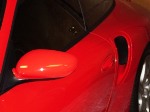 |
CC Member

|
|
|
Join Date: Apr 2002
Location: Alpharetta,
GA
Cobra Make, Engine: Sold - Unique FIA - SA 396 Stroker
Posts: 2,440
|
|

 Not Ranked
Not Ranked
I've often wondered who got my share of brain cells - now I know. Good stuff guys - even if I'm like Al and just read - it is neat.
Randy
My first experiment in brakes was when I was about 12. I bulit a go cart (ok a wood death trap). My brakes- blocks of wood attached to my shoes (Keds). The steering was a bit odd as well - it came out of some British something or other. I installed it upside down so turning the wheel left produced a right turn.
__________________
Sold the Unique - Bought a Porsche TT - Sold the TT - Bought a truck
|
 Posting Rules
Posting Rules
|
You may not post new threads
You may not post replies
You may not post attachments
You may not edit your posts
HTML code is On
|
|
|
All times are GMT -7. The time now is 08:42 AM.
|



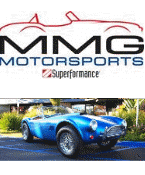

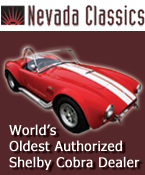

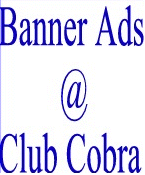
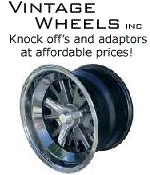


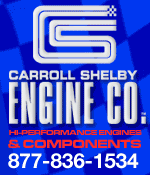










 Linear Mode
Linear Mode



